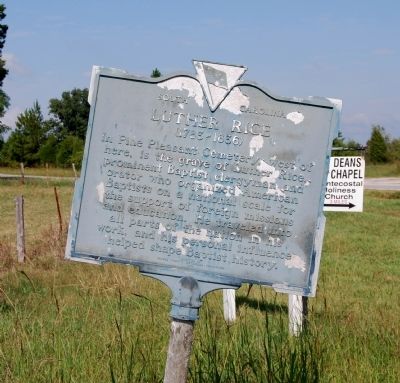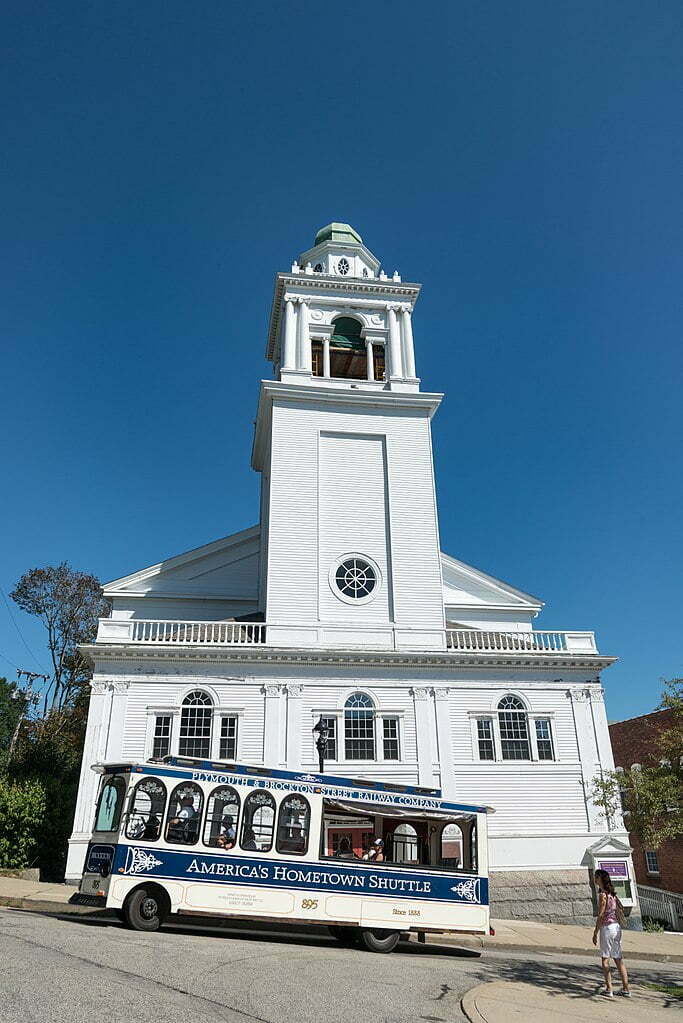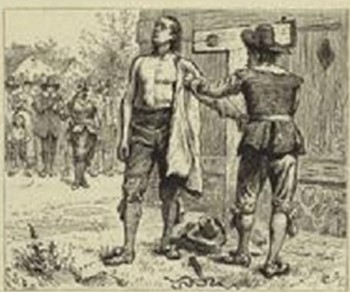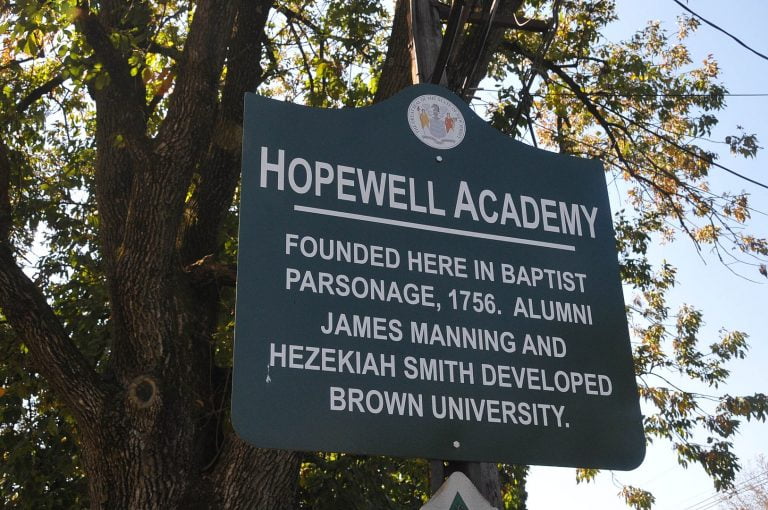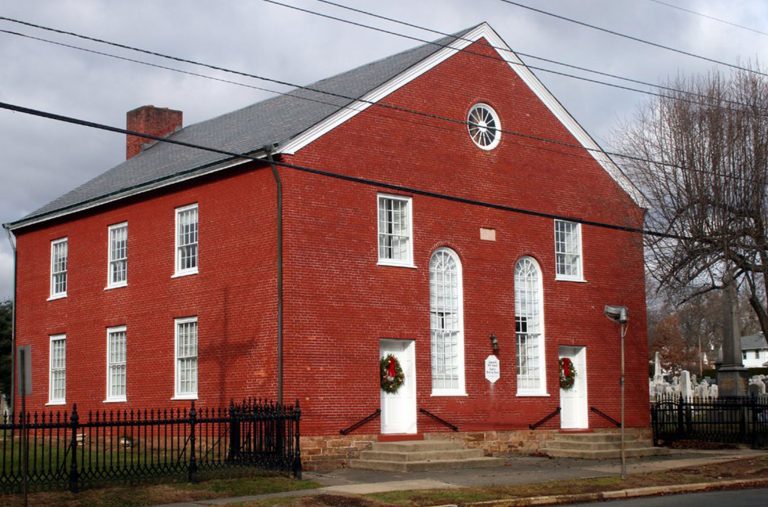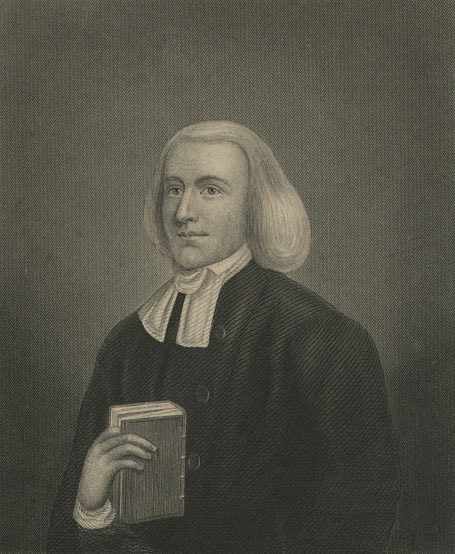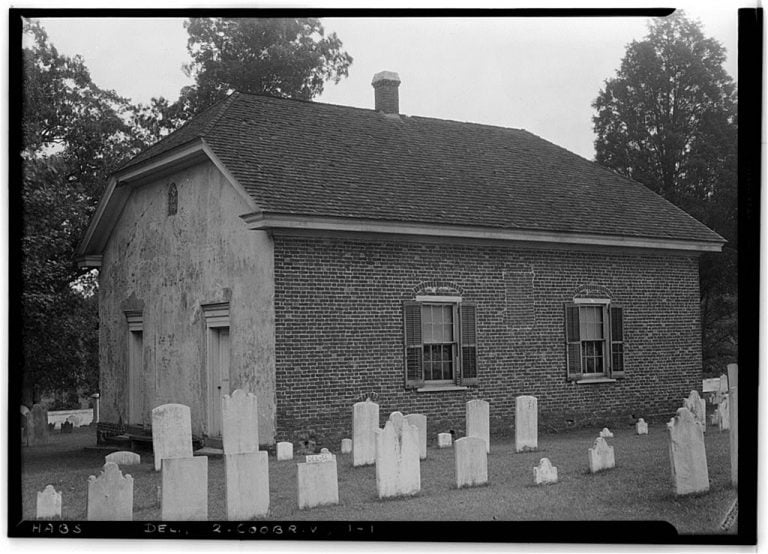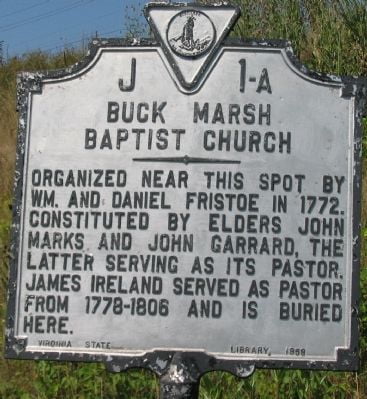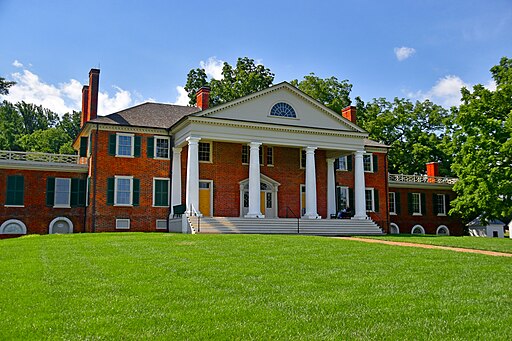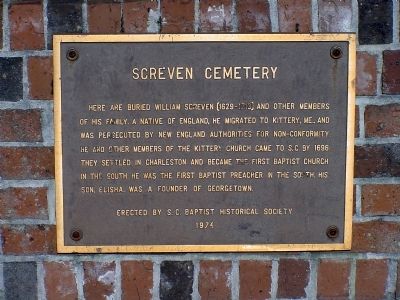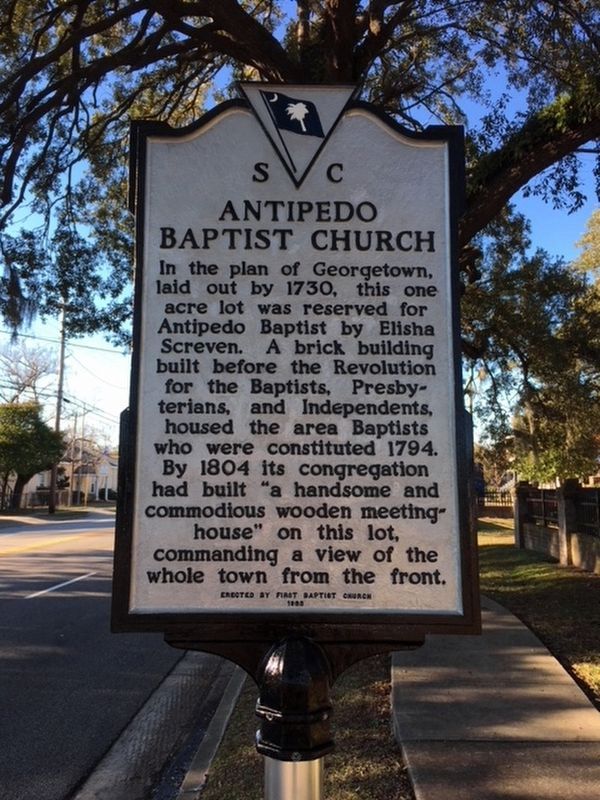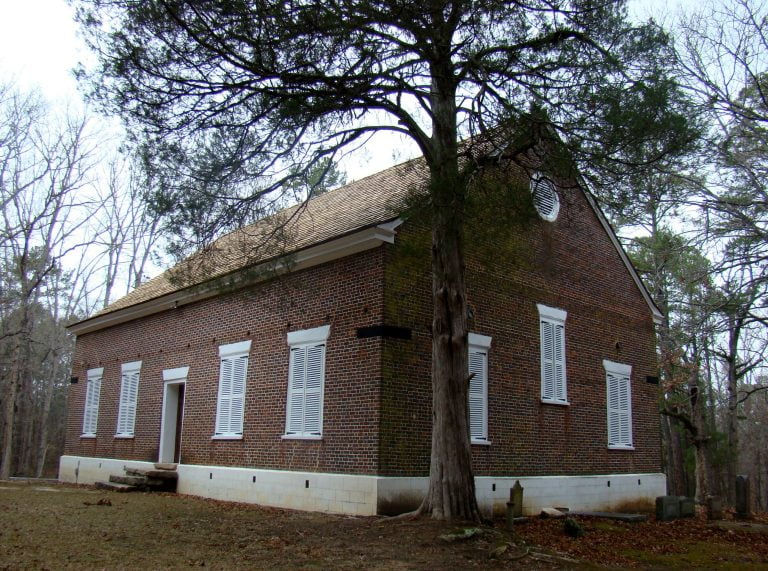Favorite
Siloam Baptist Church, 2409 Siloam Church Road, was founded by John Waller. The historical marker at the church offers valuable information. copyrighted and used by permission from David Beale, Baptist History in England and America: Personalities, Positions, and Practices Featured Image Credit: Photo: Siloam Baptist Church Marker. www.hmdb.org/PhotoFullSize.asp?PhotoID=95768. Read more...
Favorite
“I determined never to rest until it pleased God to show mercy or cut me off … I hasted into a neighbouring wood, and dropped on my knees before God, to beg for mercy. In an instant, I felt my heart melt and a sweet application of the Redeemer’s love to my poor soul.” John Waller was somewhat of Read more...
Favorite
Luther Rice preached his final sermon at Pine Pleasant Baptist Church (est. 1831). His remains were laid to rest here in the churchyard, at 457 Pine Pleasant Road. Under a distinctive canopy, his tomb has a marble slab with a biographical inscription. copyrighted and used by permission from David Beale, Baptist History in England and America: Personalities, Positions, and Practices From Wikipedia: Read more...
Favorite
COLUMBIA FALLS – Even against a backdrop of scenery that draws millions of visitors from around the world, God’s Ten Commandments Park is hard to miss. “I tell people when they drive through the Ten Commandments Park they see the glory of God, and when they go into Glacier Park they see the majesty of God and his creation,” founder Read more...
Favorite
In 1801, the Church of the Pilgrimage broke off from the First Parish Church in Plymouth in the Unitarian Controversy. The Congregationalists formed this church, which later became part of the United Church of Christ. On the front of the church is this plaque: This tablet is inscribed in grateful memory of the Pilgrims and of their successors who Read more...
Favorite
Watch Dr. David Saxon retell the story of Obadiah Holmes on Our Christian Heritage on VCY.tv Obadiah Holmes was born in England and came to Massachusetts Bay after adopting credobaptism (baptism by belief) as opposed to the Puritan pedobaptism (baptism of infants), he was evicted from Rehoboth, MA and joined John Clarke at his Baptist Church in Newport, Rhode Island. Read more...
Favorite
Hopewell Academy (est. 1756), a Latin grammar school, founded by Isaac Eaton, pastor at Hopewell Baptist, was the earliest Baptist academy in America. The building is now a private home, but a historical plaque stands near the street. The academy’s alumni included James Manning, founder of Brown University. Other alumni included the “Baptist Whitefield,” Hezekiah Smith, who was a classmate with Read more...
Favorite
Hopewell Baptist Church is on West Broad Street (Hopewell, New Jersey). One of its most notable pastors was Oliver Hart (1723-95). Gravestones in the church cemetery include those of Isaac Eaton and John Hart, signer of the Declaration of Independence. Hart was not a member here, but he donated the land on which the building stands. Revolutionary War veterans lie Read more...
Favorite
John Gano (1727-1804) was the first full-time pastor of First Baptist in the City of New York (est. 1762). During the War of Independence, Gano served as chaplain to George Washington. In 1891, during the ministry of I.M. Haldeman (1845-1933), the church erected its present building at 265 West 79th Street at Broadway. (See Chapter 16). copyrighted and used by permission Read more...
Favorite
The Welsh Tract Baptist Church, on Welsh Tract Road, originated in 1701, when sixteen people formed the original congregation in Wales. In 1703, they settled on a thousand acre tract of land, granted by William Penn and since known as the Welsh Tract. As the first Baptist church in Delaware and situated a couple of miles south of Newark, they Read more...
Favorite
Pennepack Baptist Church, founded by Elias Keach, in 1688, is the oldest surviving Baptist church in the Middle Colonies. In 1805, at the peak of the Second Great Awakening, during the ministry of Samuel Jones, the congregation erected its present (third) building, constructed from fieldstone collected from the surrounding meadows. Straight-backed box pews occupy the main floor. An elegant, high Read more...
Favorite
Berryville (formerly Buckmarsh) Baptist Church is at 114 Academy Street. John Gerrard (Garrard, ca. 1720-87), in 1772, constituted the Buckmarsh church. James Ireland (ca. 1745-1806) served the Buckmarsh pastorate from 1786 until his death. Ireland’s remains lie in an unknown grave in the Buckmarsh cemetery. A historical plaque marks the site where Buckmarsh Baptist once stood. The plaque is only Read more...
Favorite
On Washington Avenue, stands the Thomas Jefferson Religious Freedom Monument, made from stones sent from churches across the country. It commemorates Jefferson’s Virginia Religious Freedom Statute, promising that “no man shall… suffer on account of his religious opinions or belief.” The Statute became the basis for the religion clause of the First Amendment. copyrighted and used by permission from David Beale, Baptist History Read more...
Favorite
Nearby is Montpelier, home of the two-term, fourth President, James Madison – Father of the Constitution and Architect of the Bill of Rights. It was here that Dolley Madison earned the epithet “America’s first, ‘First Lady’.” Montpelier is at 11350 Constitution Highway, Montpelier Station. copyrighted and used by permission from David Beale, Baptist History in England and America: Personalities, Positions, and Read more...
Favorite
A short drive southwest of Orange is Monticello, at 931 Thomas Jefferson Parkway, Charlottesville, the home of President Thomas Jefferson – principal author of the Declaration of Independence. His tombstone inscription says: Here was buried Thomas Jefferson, author of the Declaration of American Independence, of the Statute of Virginia for Religious Freedom, and father of the University of Virginia. copyrighted and Read more...
Favorite
First Baptist Church finds its roots in 1696, when William Screven and his twenty-eight member church (est. 1682) moved from Kittery, Maine, and settled near Charleston, as the earliest Baptist church in the south. In 1698, they moved into Charleston, as First Baptist Church, still located on Church Street. Other early Baptist pastors here include Oliver Hart and Richard Furman. Read more...
Favorite
Founded in 1729 by William Screven’s son Elisha, Georgetown lies sixty miles north of Charleston. The Screven family cemetery is on Prince Street, near the intersection of Prince and Scriven Streets. copyrighted and used by permission from David Beale, Baptist History in England and America: Personalities, Positions, and Practices Here are buried William Screven (1624–1713) and other members of his Read more...
Favorite
In the 700 block of Church Street, the remains of Edmund Botsford (1745-1819), early pastor of Antipedo Baptist (later First Baptist) Church, lie buried in the Old Baptist Cemtery. A marker was placed at Botsford’s grave in 2004. copyrighted and used by permission from David Beale, Baptist History in England and America: Personalities, Positions, and Practices In the plan Read more...
Favorite
Old Kiokee Baptist Church, founded by Daniel Marshall, is the earliest continuing Baptist church in Georgia. They erected their third (present) meetinghouse, in 1808, with its quaint auditorium, gallery, and hand-hewn pews. The congregation uses this building, at 2520 Ray Owens Road, for special services. For access, contact the church (706-541-1086). Inquire about the Marshall home-site and cemetery. copyrighted and Read more...
Favorite
In the median of US 221, near the Appling courthouse, the people of Georgia, in 1903, erected a monument to Daniel Marshall and his “devotion and consecration…to the cause of Christ.” (See Chapter 15.). copyrighted and used by permission from David Beale, Baptist History in England and America: Personalities, Positions, and Practices Rev. Daniel Marshall Born 1706, Died 1784, Pioneer Read more...


